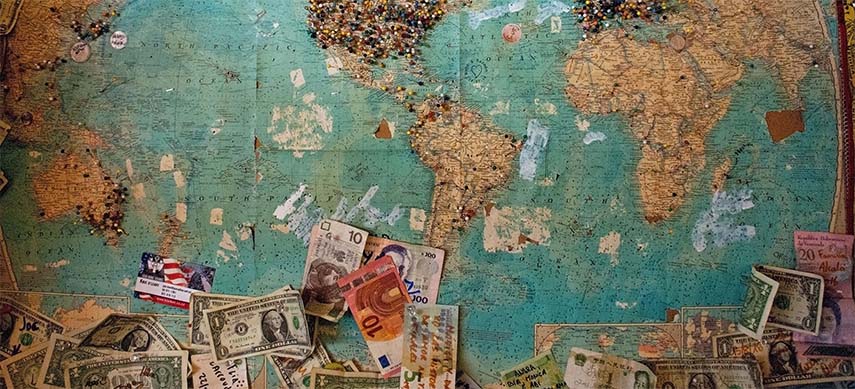After holding steady in 2019, current forecasts imply that the DHL Global Connectedness Index 2020 (GCI) will fall significantly in 2020 due to the distancing effects of Covid-19 on societies, such as closed borders, travel bans and grounded passenger airlines.
Nonetheless the pandemic is unlikely to send the world’s overall level of connectedness below where it stood during the 2008 – 09 global financial crisis.
Trade and capital flows have already started to recover and international data flows surged during the spreading pandemic as in-person contact migrated online, boosting international internet traffic, phone calls and e-commerce.
DHL and the NYU Stern School of Business have released the seventh edition of the DHL Global Connectedness Index 2020 (GCI), believed to be the first comprehensive assessment of globalisation during the spreading Covid-19 pandemic. It tracks international flows of trade, capital, information and people across 169 countries and territories.
“The current crisis has shown how indispensable international connections are for maintaining the global economy, securing people’s livelihoods and helping companies strengthen their trading levels,” says John Pearson, CEO of DHL Express.
“Connected supply chains and logistics networks play an essential role in keeping the world running and stabilizing globalisation especially at a time of a crisis that spans our globe. This reminds us of the need to stay prepared for any challenge.
“The recent vaccine breakthrough has put a spotlight on the systemic importance of fast and secure medical logistics dependent on a worldwide interconnected network that effectively ensures international distribution.”
While Covid-19 has disrupted business and life around the world, it has not severed the fundamental links that connect nations.
“This report shows that globalization did not collapse in 2020, but that the pandemic did transform – at least temporar¬ily – how countries connect. It also demonstrates both the dangers of a world where critical linkages break down and the urgent need for more effective cooperation in the face of global challenges,” comments GCI lead author Steven Altman, senior research scholar and director of the DHL Initiative on Globalisation at the NYU Stern School of Business.
“Stronger global connectedness could accelerate the world’s recovery from the Covid-19 pandemic, as countries that connect more to international flows tend to enjoy faster economic growth.”
How sub-Saharan Africa fares
Sudan, Niger, the United Republic of Tanzania, and Gambia are among the top 10 countries with the largest gains in their connectedness scores. In fact, Sudan tied Uzbekistan with the highest score increase of +10 from the previous index, due to its increasing import depth, inward portfolio equity stock and Foreign Direct Investment depth.
In contrast, Angola, Malawi, Guinea, Madagascar, and Seychelles were cited amongst the countries with the largest absolute declines in global connectedness since the last GCI report in 2017.
At 48th, Mauritius is the highest ranked country in the sub-Saharan Africa region, followed by Seychelles at 52nd. South Africa is the highest ranking country on the African continent itself, with a ranking of 57.
“Globalisation and digitalisation have broken down many barriers to better education, business opportunities and a higher quality of life for millions of people across sub-Saharan Africa,” says Hennie Heymans, CEO of DHL Express Sub-Saharan Africa.
“We look forward to the upcoming ratification of the African Continental Free Trade Agreement (AfCFTA), which has the potential to boost the region’s global connectedness, facilitating the movement of people, investments and businesses across the region. There are still many opportunities for the region to improve its connectedness, and DHL will continue to invest in the region to connect people and improve lives.”
The Covid-19 stress test for globalisation
Predictably, lockdowns and travel bans to curb the spread of the virus have led to an unprecedented collapse of people flows in 2020. The number of people traveling to foreign countries is on track to fall 70% in 2020, according to the latest UN forecast.
International tourism may not return to its pre-pandemic level until 2023. In contrast, trade, capital, and information flows have held up surprisingly well. International trade has rebounded strongly after a sharp plunge at the onset of the pandemic and remains a vital backbone for economies worldwide.
Capital flows were hit harder. Foreign direct investment (FDI) flows, which reflect companies buying, building or reinvesting in operations abroad, could fall 30% to 40% this year, as also projected by the UN. However, strong policy responses by governments and central banks have helped to stabilize markets. Digital information flows have surged as the pandemic has sent work, play and education online. People and companies rushed to stay connected digitally, driving double-digit increases in global internet traffic.
The DHL Global Connectedness Index employs more than 3,5-million data points to track the globalization of 169 countries over the period from 2001 to 2019. It measures each country’s global connectedness based both on the size of its international flows relative to the size of its domestic economy (depth) and the extent to which its international flows are distributed globally or more nar¬rowly focused (breadth).

